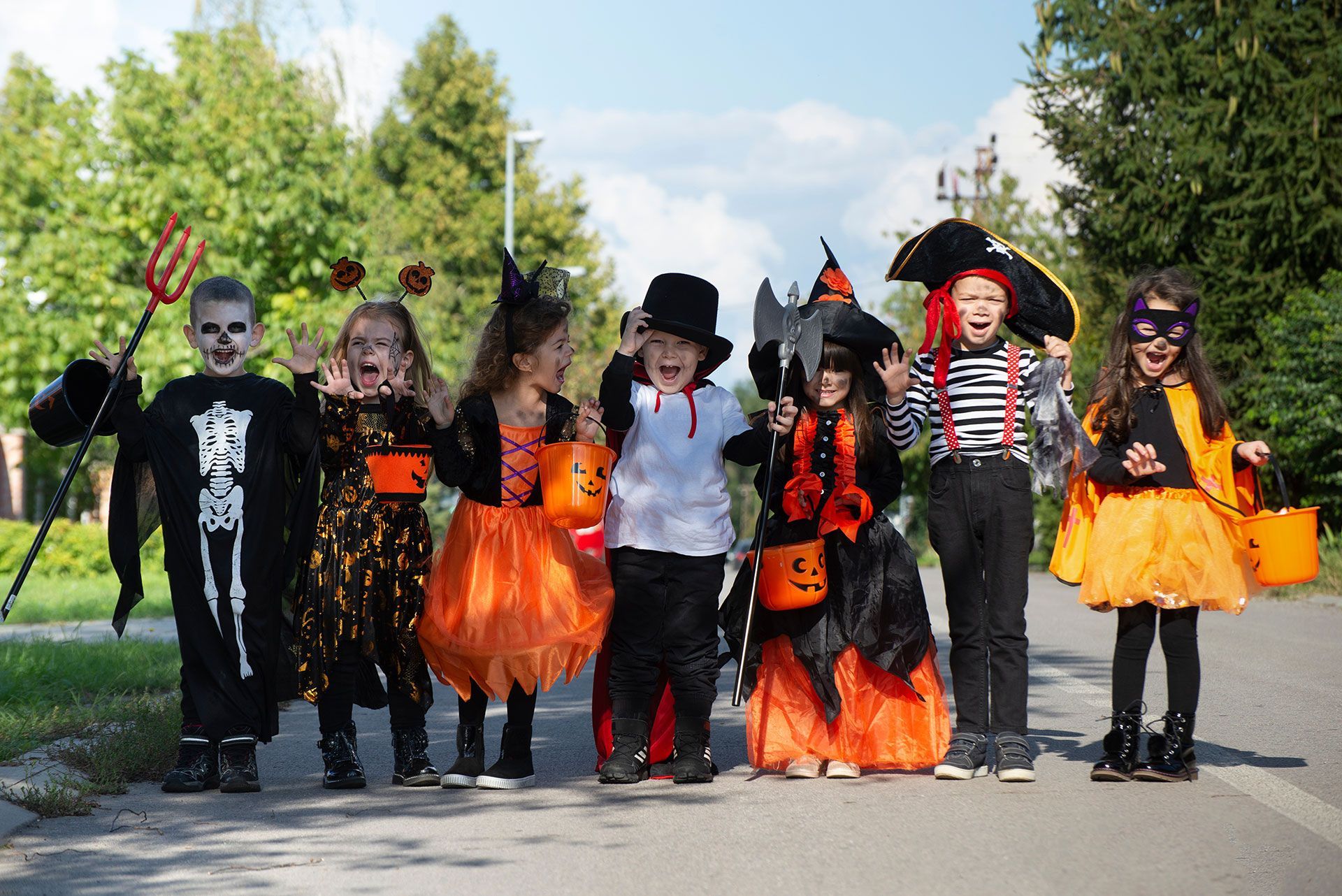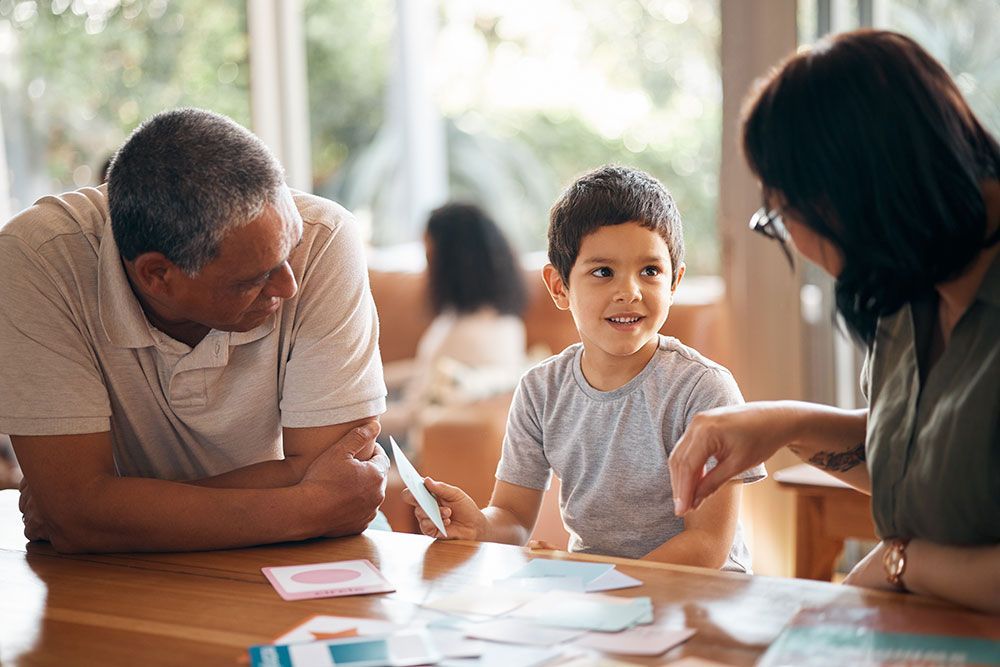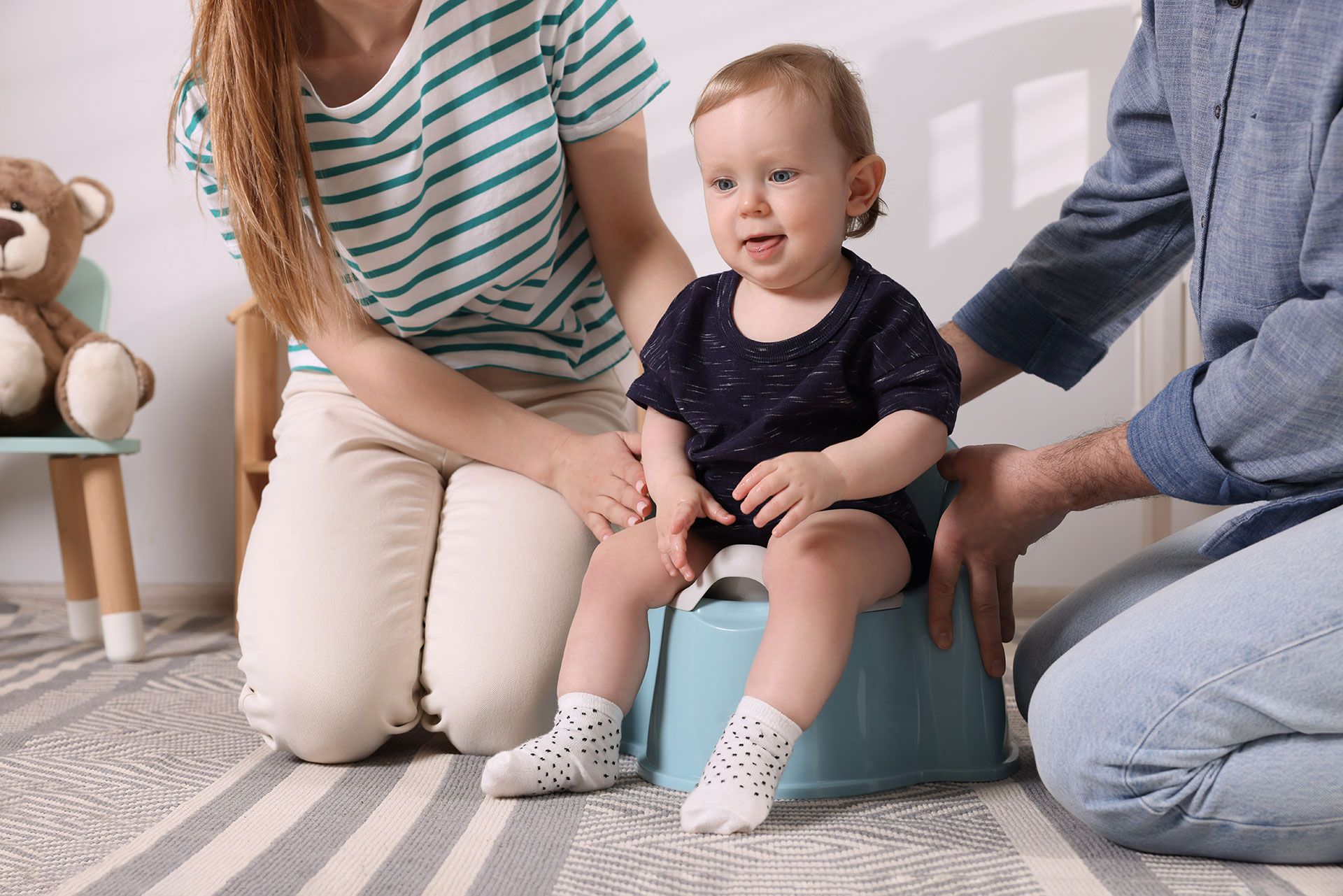Trick or Treat!

As hard as it is to imagine with temperatures still so high, the holiday season is upon us! Starting with Halloween this month, we are entering a truly wonderful season with our little ones. You have probably already filtered many costume requests, settled on a winner, and are working to get your trick-or-treating plans in order. Follow along for some tips to make sure your experience is safe and fun for the whole family.
1. Beware – make sure to prepare!
While Halloween can be fun, it can also be over-stimulating and confusing. Make sure to explain what to expect using a script. For example, you could say, “We are going to put on our costumes, load up the stroller, and walk around our neighborhood. Lots of other people will be wearing costumes, too. Sometimes, they might be wearing masks or have a fake boo-boo, but it is just for pretend! We might see some of our friends while we are out, although we might not stay together the whole time. We will walk up to the front doors of some houses and knock. Someone might answer the door holding a treat! We can smile, say hello, or even say, ‘Trick or treat!’ We will then get to pick one piece of candy to put in our basket. Afterward, we will say, ‘Thank you,’ and walk back to the sidewalk. When it is time for bed, we will walk back home and talk about how much fun we had.” For bonus points, you can even practice the routine of trick-or-treating in your home leading up to the holiday!
2. Dress for success
Be mindful of costumes that restrict your child’s range of motion, vision, or balance. Consider the weather and make adjustments as needed if it is too hot out. Consider adding glow-in-the-dark elements to your costumes or stroller if planning to be out past dark. You might also practice reminding your child what you are wearing in case you become separated in a big group, such as “Look for mommy’s big yellow hat!”
3. Reduce pressure
If your child is refusing to wear their costume, in tears after the first house, or having an epic tantrum about not being allowed to take more than one piece of candy, don’t push it! It is okay if they trick-or-treat in their normal clothing or hand out candy from the porch; there will be many more opportunities to try again.
4. Keep it short and sweet
Especially for little ones, less is more when it comes to the amount of time spent trick-or-treating. Consider the timing of meals and bedtime in order to maintain your typical routine as much as possible. Make sure to eat a solid dinner beforehand and head out on the earlier side. That way, your little ones can explore for about an hour before heading back in advance of the larger crowds and older children.
Most importantly, remember to have fun and enjoy some treats of your own!

Katherine Cohn, PhD
Licensed Child Clinical Psychologist
Licensed Specialist in School Psychology








